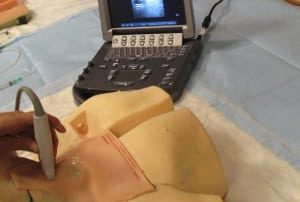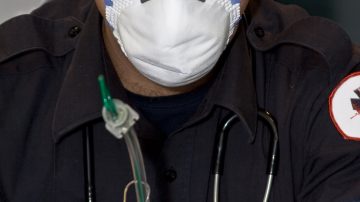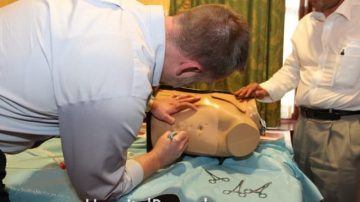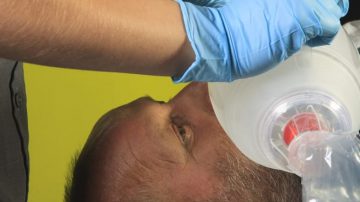Point-of-care ultrasound is one of the most rapidly evolving areas of medicine. In addition to becoming the “stethoscope of the future” for bedside diagnostic evaluations, ultrasound has improved the safety and efficiency of a wide range of procedures. The use…
Read MoreEmergency department (ED) intubation is constantly evolving, with new devices, techniques, and medications being frequently adopted. To evaluate temporal trends, National Emergency Airway Registry (NEAR) investigators analyzed registry data on ED intubations at 13 large hospitals in the U.S., Canada,…
Read MoreMore Articles – Cardiovascular diseases, Chest Tube, Emergency Procedures, Featured, medical procedures
The optimal insertion site for tube thoracostomy is at the mid-axillary line in the triangle of safety. This avoids any major nerves or arteries aside from the intercostal vessels. Ultrasound-guided localization of this site performed better than palpation. In semi-elective…
Read MoreOver the past several years, there has been a dramatic increase in the use of the new oral anticoagulants (Dabigatran, Rivaroxaban, and Apixaban). The popularity of these medications stems not only from aggressive pharmaceutical monitoring to physicians and to the…
Read MoreThe 2018 AHA/ASA guidelines for the early management of acute ischemic stroke provides some important new evidence-based recommendations. Some important new recommendations described in these guidelines include: The DAWN and DEFUSE 3 trials selected patients for mechanical thrombectomy within an extended time…
Read MoreMore Articles – Emergency Procedures, Featured, Medical General, medical procedures, Respiratory diseases
We are in the midst of an aggressive influenza season right now that should continue into March, so it is nice to review the testing accuracy of standard influenza point-of-care tests that are commonly used. There are many Rapid Influenza Diagnostic…
Read MoreMore Articles – Emergency Procedures, Featured, Gastrointestinal diseases, Ginecology, medical procedures, Traumatology
Tranexamic acid (TXA) has been shown to decrease deaths from acute severe bleeding. To determine if time to treatment is associated with the effectiveness of TXA, these authors conducted a systematic review and only two trials met their criteria: the…
Read MoreWith flush-rate oxygen, a non-rebreather mask was at least as good as a bag-valve-mask ventilation for intubation preoxygenation. Many intubators using the rapid sequence intubation protocol use a bag-valve-mask (BVM) for preoxygenation. But in the absence of a good mask…
Read MoreSeveral studies in 2014 suggested that intravenous iodinated contrast use in computed tomography (CT) scanning was not associated with acute kidney injury. Now, the Mayo Clinic has performed a retrospective study of data investigating 5758 adults with chronic kidney disease…
Read MoreAs a third year medical student at a busy trauma center, one of my jobs was to hold a bag of saline connected to the trauma victim’s abdomen and throw the bag to the ground when it emptied. While I…
Read MoreStaph aureus bacteremia (SAB) includes both MRSA and MSSA bacteremia and carries an attributable mortality rate of up to 25%. As such, it is important to determine ways in which this mortality rate can be reduced. The evidence base for…
Read MoreThere have been a few studies that have demonstrated that bedside ultrasound has a high sensitivity and specificity for fracture diagnosis. Researchers in Italy compared the accuracy of US to that of plain radiography (the gold standard) in 204 children…
Read MoreMore Articles – Emergency Procedures, Featured, Mechanical Ventilation, medical procedures, Procedural Sedation
Researchers assessed the incidence of sedation-related serious adverse events (SAEs) and risk factors for them in a prospective cohort study of children ≤18 years of age presenting to six Canadian pediatric emergency departments (EDs) and requiring sedation for painful procedures.…
Read MoreChoosing Wisely is an initiative by the American Board of Internal Medicine that solicits evidence-based recommendations by other specialty associations to identify tests or procedures in their field which are unnecessary. The following are a set of five recommendations that…
Read MorePhysicians and healthcare workers have long known that certain articles of clothing can act as fomites with the potential of spreading infection. The best studied articles of clothing and equipment that can contribute to this spread include neckties, scarfs, stethoscopes,…
Read MoreCategories
- ACLS (1)
- Arterial line (33)
- Cardiovascular diseases (77)
- Central line (55)
- Chest Tube (39)
- Dermatology (4)
- Emergency Procedures (139)
- Endocrinology (6)
- Endotracheal Intubation (36)
- Events (24)
- FAST Exam (12)
- Featured (113)
- Featured Procedure (42)
- Gastrointestinal diseases (32)
- Ginecology (3)
- Glidescope Intubation (21)
- Hematology (33)
- Hospital Procedures (85)
- Infections (32)
- Intraosseous line (8)
- King Tube (27)
- Laryngeal Mask Airway (18)
- Lumbar Puncture (36)
- Mechanical Ventilation (34)
- Medical General (95)
- medical procedures (258)
- Needle Decompression (6)
- Nephrology (11)
- Neurological diseases (12)
- Oncology (4)
- Paracentesis (32)
- Pericardiocentesis (3)
- Procedural Sedation (19)
- Respiratory diseases (85)
- RUSH Exam (8)
- Thoracentesis (37)
- Traumatology (24)
- Travel (27)
- Ultrasound-Guided Peripheral IV (13)













